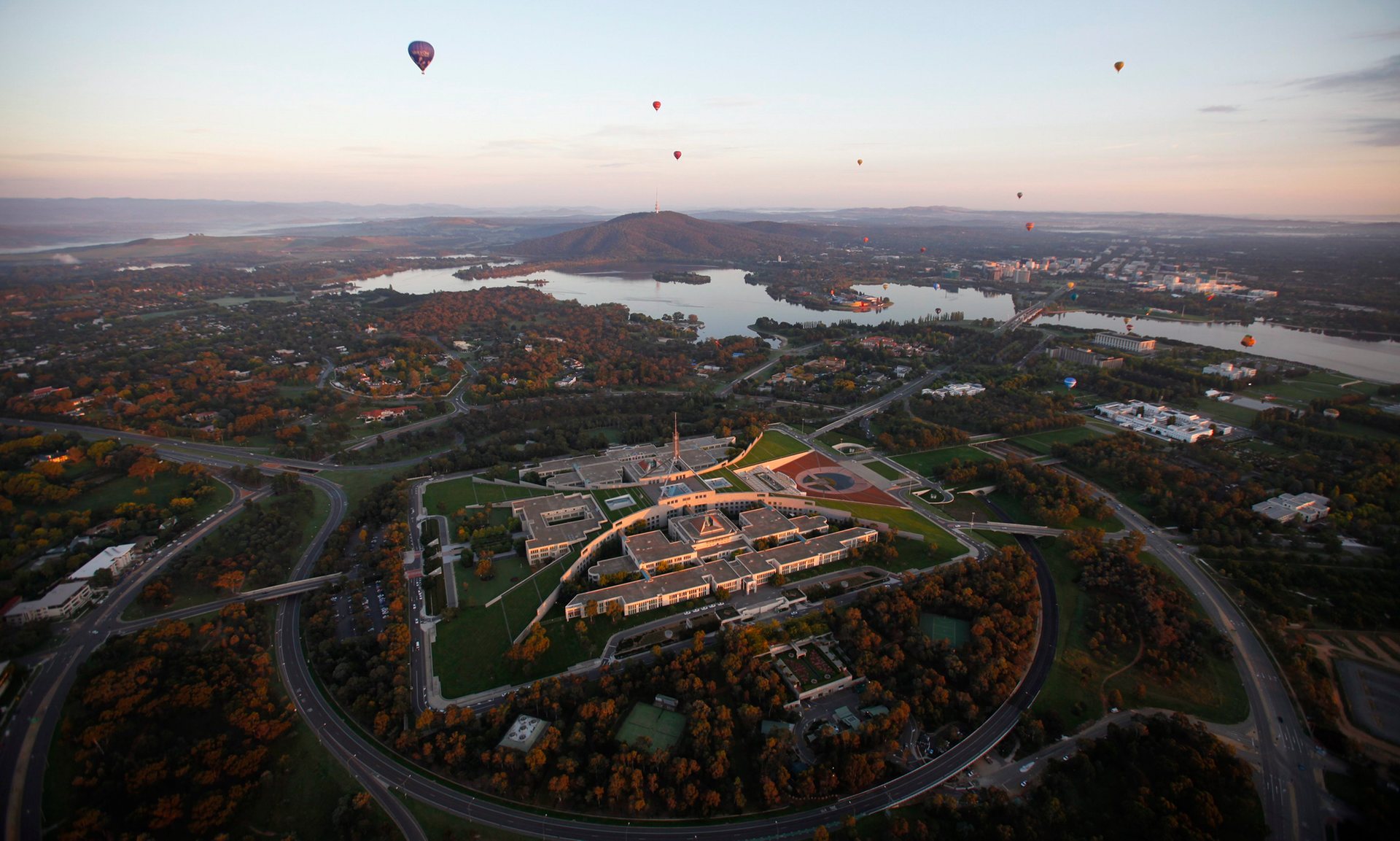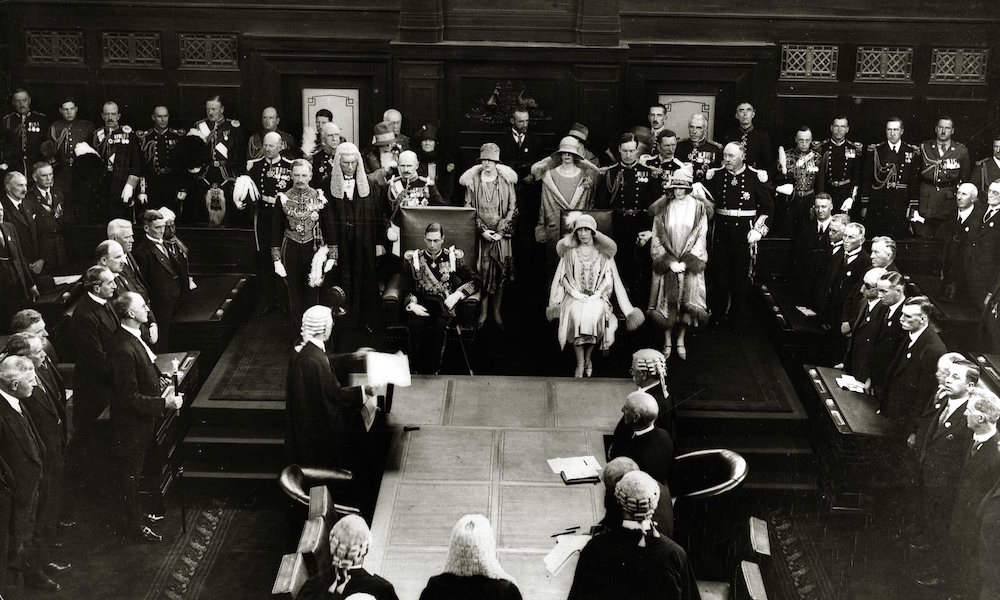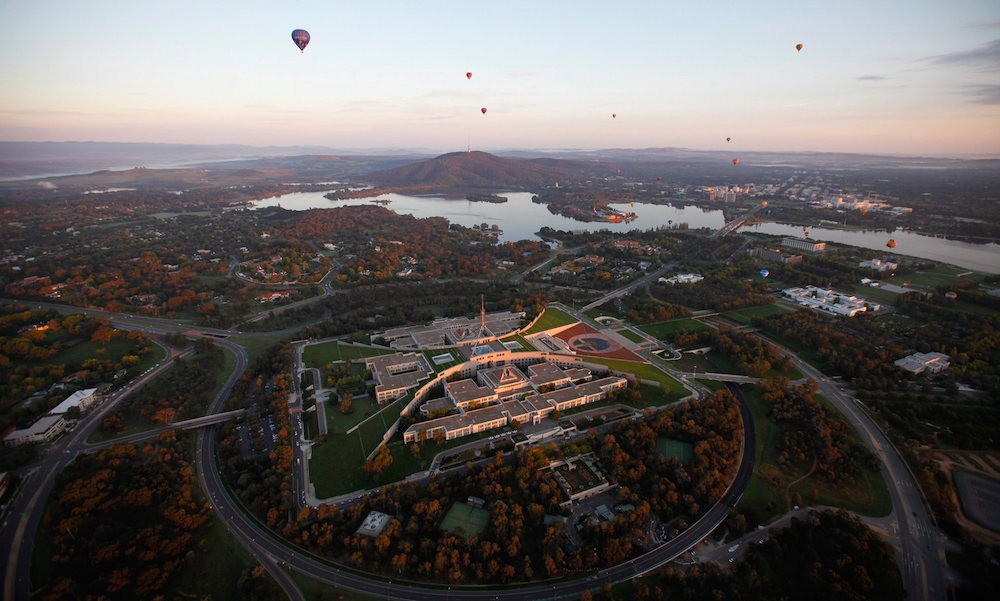Chicago pacifist Walter Griffin’s design for Australia’s new capital promised so much – even German beer gardens. But when war broke out, his ideas were shunned by planners and politicians alike, and a more prosaic city emerged.

In May 1912, Chicago landscape architect Walter Griffin won an international competition to design an unnamed capital of Australia. Overseas entrants had been given only maps, a cyclorama landscape print and – if they could access it – a plaster model of the site to work with.
Perhaps unsurprisingly, some of the proposed designs suggested futuristic, high-density metropolises built around elaborate canals and weirs (third-placed Frenchman, Donat Alfred Agache, even pitched a formal European-style city through which raged a wild river – like the Seine in Paris).
Many of the international designs were simply impractical, however, suiting colder, wetter climates and more confined spaces. They lacked sympathy for the landscape.
Griffin – the conjurer and dreamer – was a lousy draughtsman. So his wife, world-renowned architectural artist Marion Mahony Griffin, rushed to produce a series of watercolour and photographic dye images of their dreamt capital.
From our partners:
In nine weeks they created a stunning composition: a city of hexagonal boulevards and streets joined by bush corridors, studded with monumental buildings and anchored by land and water axes. Its heart, where the axes met, was an artificial lake that would emerge with the damming of the Molonglo river to flood the plains.
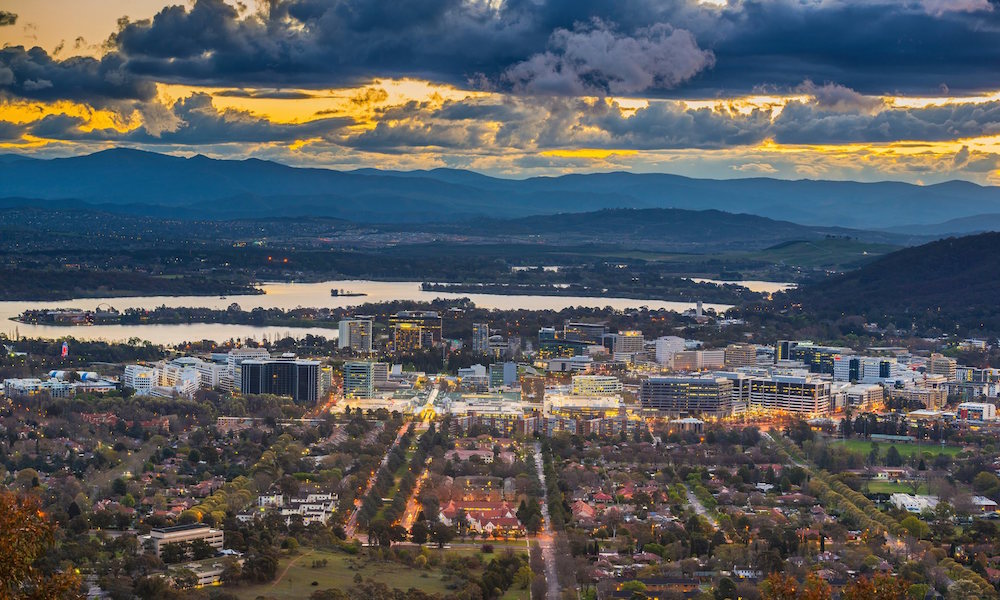
It was a beautiful blueprint, resonant of the garden city movement that influenced the Griffins’ evolution as architects at the foot of the Chicagoan maestro Frank Lloyd Wright. But beyond Marion’s grey-green, brown and russet images, this low-rise, medium-density, monumental capital had an ideological foundation, reflecting Walter’s stated intent to design a city for a country of “bold democrats”.
After winning the competition, Griffin declared he’d “planned a city not like any other city in the world … an ideal city – a city that meets my ideal of the city of the future”.

Perhaps the greatest of many misconceptions about Canberra, however, is that it was actually built according to Griffin’s superb design.
As Paul Reid, author of Canberra Following Griffin: A Design History of Australia’s National Capital, points out: “Canberra’s citizens proudly claim Griffin as the designer of their city … The impression given is that modern Canberra is Griffin’s city, with a few changes necessitated by modern life, of which he would have approved. In fact the vitality of Griffin’s proposed urban terraces and monuments has been replaced by quiet suburbs on a serene landscape.”
Griffin had long been intrigued by the 1901 evolution into federation of this vast continent of disparate colonies of convicts, miners, stockmen and soldier settlers. He was thoroughly taken with the symbolism of the capital as explained by King O’Malley – an American who posed as a Canadian (as only the Commonwealth-born could serve in Australia’s parliament), and a shyster on many other fronts.
“We desire to have a city that will be the Gotham of Australia … [and] in a few years will rival London in size, Athens in art and Paris in beauty,” O’Malley said with typical hyperbole. “If an Australian can produce a design, it will be accepted; but we require the best we can get, whether it comes from Swede or Dane, from Quaker, Shaker or Holy Roller.”
At a March 1913 ceremony atop Kurrajong hill, overlooking the rabbit-plagued, sheep-studded blank canvas for the capital, the future city became “Canberra” – its etymology cradled in “Ngambri”, the name of the first people of the limestone plains. Officials laid a six-sided foundation stone as the intended base of a monolithic obelisk.
The Griffin Canberra was a testament to peace. But war would soon change all that.
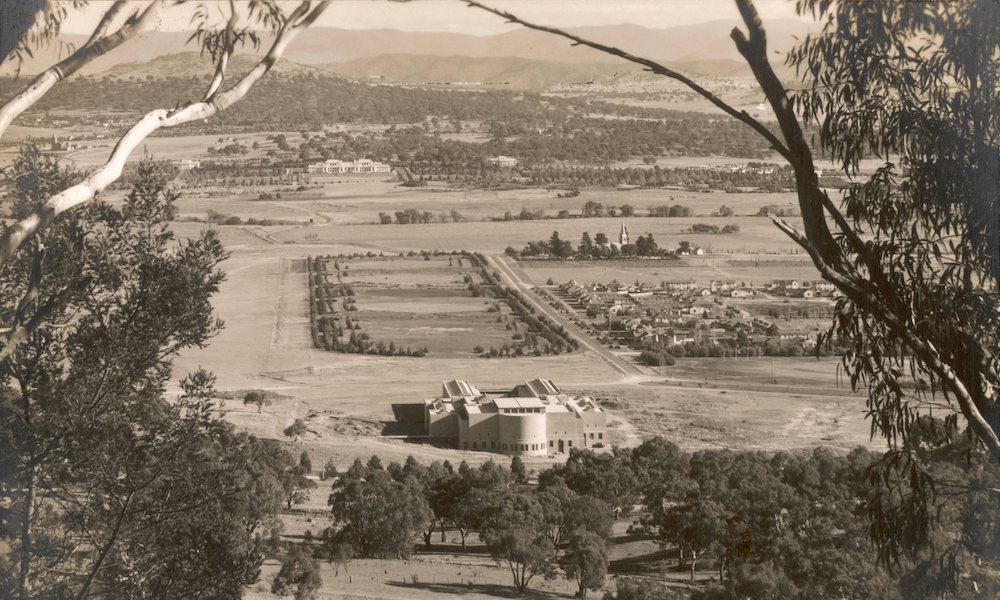
The Anglophile Australian planners overseeing the capital project were already hostile to elements of Griffin’s plan when he arrived in Australia to salvage it in May 1914. Then, barely a month later, came the spark of the first world war – the assassination in Sarajevo of the heir to the Austro-Hungarian throne, Archduke Franz Ferdinand. Australia obsequiously trailed Great Britain to war in August 1914.
This feature originally appeared in The Guardian.






